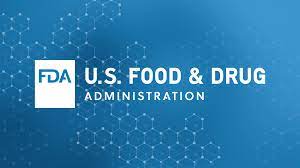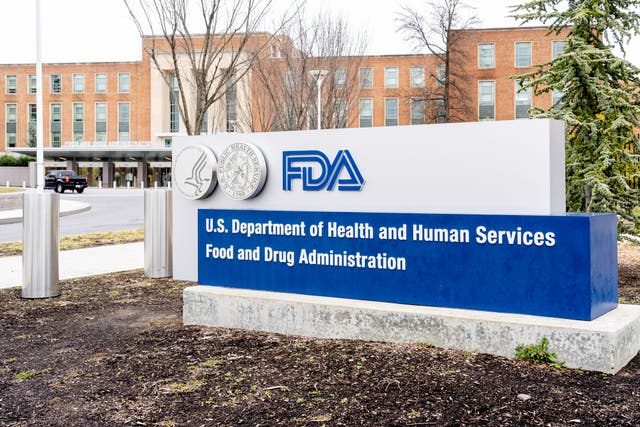The Food and Drug Administration (FDA or the Agency), the US regulating authority in the sphere of medical devices, has published detailed guidance dedicated to the types of communication during the review of medical device submissions. The document is intended to provide additional clarification for medical device manufacturers and other parties interested in placing medical devices on the US market.

The new FDA guidance replaces the guidance on interactive review of medical device submissions published by the Agency earlier in 2008. The later version of the present FDA guidance was issued in April 2014.
Please note that due to its legal nature, the FDA guidance itself does not introduce any mandatory rules or requirements the parties involved should follow, so in case of any discrepancies with the provisions of the relevant legislation the latter should prevail.
Regulatory Background
First, the guidance provides a brief overview of communication development through time. According to the document, the two initial types of communication between the Agency and the applicant were formal communication and the process of Interactive Review. In the later stages, the FDA introduced certain improvements intended to facilitate the review of medical device submissions and make all the procedures associated thereto more efficient. As a result, the list of types of communication has been extended and supplemented by the new types. The present document is intended to describe in detail all types of communication set forth by the current regulatory requirements and outline the most important aspects associated thereto.
According to the document, the four main types of communication during the review of medical device submissions include the following:
- Acceptance Review Communication for premarket notification submissions (510(k)s), original premarket approval applications (Original PMAs), Panel-Track PMA Supplements, and Pre-Submissions;
- Substantive Interaction for 510(k)s, Original PMAs, Panel-Track PMA Supplements, and 180-Day PMA Supplements;
- Interactive Review; and
- Missed MDUFA Decision Communication for 510(k)s, Original PMAs, and Panel-Track PMA Supplements.
At the same time, the FDA also mentions that various appeals, as well as general policy discussions, fall outside the scope of the present guidance.
The document describes in detail each type of communication listed above and indicates the key points to be considered.

Acceptance Review Communication
The first type of communication described by the Agency is the Acceptance Review Communication. According to the document, this type of communication is intended to:
- Identify the lead reviewer or Regulatory Project Manager assigned to the submission; and
- Confirm acceptance of the submission or notify the submitter that the submission was not accepted based upon the review of the submission against objective acceptance criteria.
The FDA has already published separate guidance documents dedicated to the acceptance review.
According to the present FDA guidance, the Acceptance Review Communication takes place within fifteen days of the date the Agency receives the initial submission or fourteen days in the case of a pre-submission.
The Agency additionally emphasizes that the Acceptance Review would not commence until the regulating authority duly received an eCopy .
Once the Acceptance Review is complete, the Agency will get back to the applicant with details. The Acceptance Review Communication addresses aspects related to the completeness of the submission. However, it should not contain details about any deficiencies identified by the FDA during the review process.
In this regard, the FDA describes two potential situations:
1. If the submission is accepted, the FDA will notify the applicant about the acceptance, and also indicate the name of the FDA lead reviewer or Regulatory Project Manager. In the case of a 510(k) and Pre-Submission, this would mean the acceptance for substantive review, while in the case of an Original PMA or Panel-Track PMA Supplements – for filing review respectively.
2. If the submission is not accepted, the FDA will notify the applicant and indicate the particular elements required in order for the submission to be accepted. However, the FDA will still indicate the name of the lead reviewer or Regulatory Project Manager.

Substantive Interaction
A Substantive Interaction applies when the Agency notifies about its intent to cooperate with the applicant in order to resolve the deficiencies identified in the course of the Interactive Review process, while the submission is not required to be placed on hold. At the same time, a Substantive Interaction could also be applied if the submission should be placed on hold before the deficiencies could be addressed.
The document also provides the timing to be applied in case of Substantive Interaction. According to the present FDA guidance, the following timeframes should be applied:
- 60 days of the receipt date of a complete submission for 510(k)s,
- 90 days of the filing date for Original PMAs and Panel-Track PMA Supplements; and
- 90 days of the receipt date for 180-Day PMA Supplements.
The Agency also mentions that the timeframes listed above should also include additional fifteen days for the Acceptance Review.
The content of Substantive Interaction will also vary depending on the decision taken by the FDA, namely:
- If the submission is not placed on hold, the FDA will inform the applicant about this and also inform that the deficiencies will be handled through Interactive Review. The FDA also mentions that this would not impact the review timeframe calculation.
- If the FDA decides to place the submission on hold, it would inform the applicant about that.
Interactive Review
According to the present FDA guidance on types of communication during the review of medical device submissions, the Interactive Review process is intended to facilitate the efficient and timely review and evaluation by FDA of premarket submissions through increased informal interaction between FDA and applicants, including the exchange of scientific and regulatory information. In particular, it is intended to improve the effectiveness of communications between the regulating authority and the applicant, reduce the number of review cycles, prevent unnecessary delays, and ensure timely responses from applicants.
The document also describes the applicable timeframes, as well as other important aspects related to the Interactive Review. For instance, the Agency states that the actual scope of the Interactive Review has been expanded in comparison with the scope outlined in the initial guidance. In particular, the initial guidance stated that only minor deficiencies would be considered appropriate. Later the scope has been expanded in order to cover more significant deficiencies as well.
The timeframes for the applicant to provide a response with regard to the deficiencies identified should be determined by the regulating authority on a case-by-case basis, depending on the assumptions on the time the applicant would need to respond, and the Agency would need to review the response. The final date should be explicitly indicated by the regulating authority.
Missed MDUFA Decision Communication
The fourth type of communication during the review of medical device submissions described in the present FDA guidance is a Missed MDUFA Decision Communication intended to notify about aspects preventing the Agency from reaching a MDUFA decision.
In summary, the present FDA guidance describes the four types of communication during the review of medical device submissions and provides details on the most important aspects associated thereto. In particular, the Agency outlines the intended purpose of each communication, as well as it’s content and applicable timeframes.
How Can RegDesk Help?
RegDesk is a next-generation web-based software for medical device and IVD companies. Our cutting-edge platform uses machine learning to provide regulatory intelligence, application preparation, submission, and approvals management globally. Our clients also have access to our network of over 4000 compliance experts worldwide to obtain verification on critical questions. Applications that normally take 6 months to prepare can now be prepared within 6 days using RegDesk Dash(TM). Global expansion has never been this simple.
Sources:

